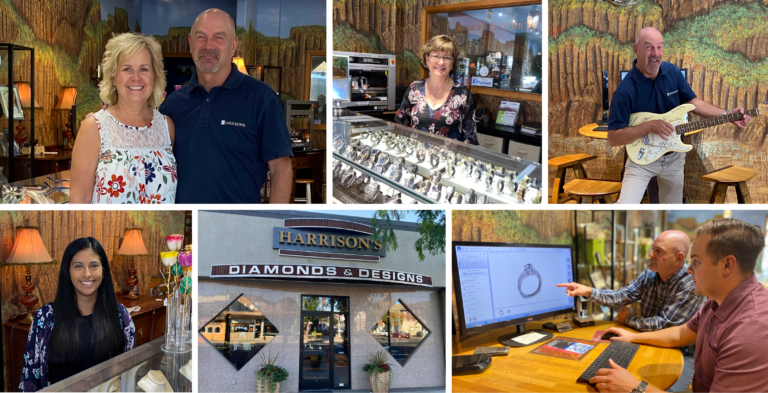
Are Lab Grown Diamonds Real or “Impastas”?
Are lab grown diamonds real or “impastas”? They say diamonds are a girl’s best friend, but what they don’t tell you is that diamonds come with a whole lot of baggage. If you’re looking to buy a diamond, you might be wondering: are lab grown diamonds real or imposters? And if they’re real, are they just as good as the mined diamonds?
If you’ve been on the internet in the last five years, you’ve probably seen an ad for a lab grown diamond. But what are they? And more importantly, are they any good? In this blog post, we’ll be taking a comprehensive look at lab grown diamonds to answer all of your burning questions.
What Are Lab Grown Diamonds?
Lab grown diamonds have been around since the 1950s but only recently have they gained popularity as a cheaper alternative to natural diamonds. In fact, according to one study, lab grown diamond sales increased by nearly 50% between 2018 and 2019 alone!
Lab grown diamonds are created in a laboratory out of carbon. The carbon is placed in an environment that mimics the conditions under which natural diamonds are formed—namely, high pressure and high temperature. This process takes anywhere from a few weeks to a few months, after which the diamond is cut and polished just like a natural diamond.
HPHT and CVD techniques for diamond production are quite interesting. HPHT mimics the Earth’s natural process of creating diamonds, using extremely high heat and pressure conditions of about 2000°C and over 1.5 million PSI. Diamonds made using CVD are a newer development. This process imitates the formation of diamonds in interstellar gas clouds. The diamond is formed layer by layer as energy breaks the chemical bonds in gases. Most CVD production systems can create multiple sizes or carats of diamonds at the same time, while HPHT systems are limited to a single size or carat. HPHT also requires more expensive equipment and greater operational costs. In addition, HPHT tends to result in a higher percentage of lower quality diamonds (lower clarity, color, and carat), while CVD almost exclusively produces high quality diamonds. For these reasons, CVD has become the preferred approach for diamond production.
What Are Natural Diamonds?
Natural diamonds form deep within the earth over the course of millions of years. They start as small pieces of carbon that get trapped in pockets of magma. As the magma rises toward the surface of the earth, the extreme pressure and heat transforms the carbon into crystals of pure diamond.
Today, most natural diamonds are mined from kimberlite pipes—vertical shafts of rock that extend from volcanic craters to the earth’s surface. The majority of these kimberlite pipes are found in Africa but Diamond mines can be found on every continent except Europe and Antarctica.
Are Lab Grown Diamonds as Durable as Mined Diamonds?
Absolutely! Lab grown diamonds are just as hard and durable as mined diamonds. In fact, because they can be created with flawless clarity, lab grown diamonds are actually less likely to chip or scratch than their natural counterparts.
How Rare are Diamonds Really?
While it’s true that diamonds are one of the hardest substances on earth, they’re actually not that rare. In fact, there are more than enough diamonds to meet global demand—it’s just that mining them is expensive and time-consuming. This is where lab grown diamonds have a major advantage; because they can be created quickly and cheaply in a laboratory setting, there’s no need to price them sky-high.
Do Lab Grown Diamonds Have More or Less Sparkle than Mined Diamonds?
This is a tough question to answer because sparkle is subjective. However, we can say with confidence that lab grown diamonds have just as much—if not more—sparkle than mined diamonds. This is due to the fact that they can be created with accurate precision and without blemishes or impurities.
Price: Lab grown diamonds tend to be 40-50% cheaper than natural diamonds of comparable quality.
Clarity: Because they are created in controlled environments, lab grown diamonds tend to be clearer than natural diamonds. In fact, it’s estimated that nearly 90% of lab grown diamonds are classified as “eye clean,” meaning they don’t have any visible blemishes or inclusions when viewed with the naked eye.
Durability: Both lab grown diamonds and natural diamonds are extremely durable (they’re both made of carbon after all!). However, because lab grown diamonds don’t fewer internal flaws or cracks, some people believe they might actually be more durable than their natural counterparts.
Sparkliness: When it comes to sparkle factor, both lab grown and natural diamonds will score about equally well on the “4 Cs” scale (which measures color, clarity, carat weight ,and cut). So, if you’re looking for a diamond with lots of sparkle, you really can’t go wrong with either type!
Conclusion
So, now that we know what lab grown diamonds are, the question remains: Are Lab Grown Diamonds Real Or “Impastas”? In our opinion, the answer is a little bit of both. On one hand, these diamonds are every bit as real as those that come from the earth; they possess the same physical and chemical properties and they look indistinguishable from natural diamonds to the naked eye. On the other hand, some people argue that because lab grown diamonds are man-made rather than being created by nature, they can’t truly be considered “real.”
At the end of the day, it’s up to you to decide whether or not you consider lab grown diamonds to be real. However, one thing is for sure—these diamonds are here to stay. In recent years, there has been a growing demand for lab grown diamonds thanks to their many benefits. As a result, Harrison’s and an increasing number of jewelers are beginning to offer them alongside natural diamonds.
There is no right or wrong answer to this question—it ultimately comes down to personal preference. However, Harrison’s Diamonds and Designs has one of the largest collections of both Natural and Lab Grown Diamonds to Choose from. If you are on the fence, please give us a call or come into our store.
Don’t get stuck on the Jared’s or Shane Companies out there, while they might be great, we’ve been in business since 1989 and we are comparable in price. What really sets apart is we are family owned and operated. No high-pressure sale tactics. We care about you our customer and guarantee you won’t find better service anywhere in the State of Washington.
Connect with Us
Connect with us at Harrison’s Diamonds and Designs for all your jewelry needs. From custom designs to repairs and appraisals, we’re dedicated to providing exceptional service and support. Reach out to us today and let us help you make your jewelry dreams a reality.





